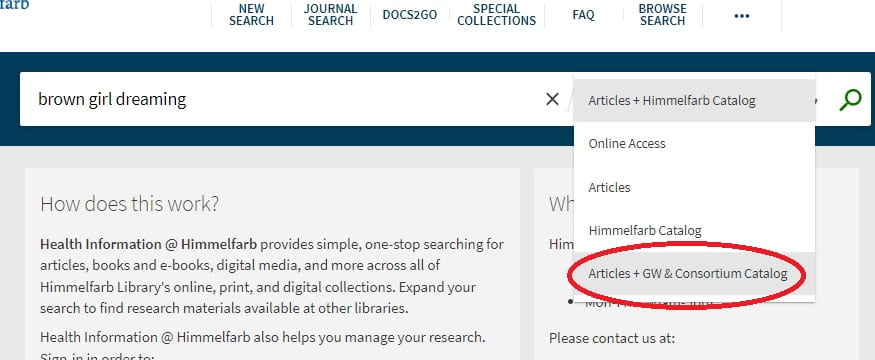
While we’re currently scrambling to study for finals, wrap up projects, and prepare for celebrations, soon there will be time to relax and kick back with a good book. Most of Himmelfarb’s collections are not your typical leisure reading, but you will find exceptions in a few of our special collections. The Humanities and Health collection, located in the nook on the first floor, has a variety of popular fiction and nonfiction books with a tie in to health topics or health providers. All of these books check out for a three week period with two possible renewals.
Browsing this collection you’ll find some bestselling fiction titles, including Homeland Elegies, Ian McKewan’s Saturday, and The Tiger’s Wife. Familiar nonfiction includes Dopesick, The Immortal Life of Henrietta Lacks, and Guns, Germs and Steel. You’ll also find many books about the experience of being a healthcare provider. Below are some other recommended selections from the collection.
All Boys Aren’t Blue: a memoir manifesto by George Johnson, 2020: A collection of essays by an LGBTQIA activist, recounting what it was like to grow up as a Black queer young man. It addresses gender identity, bullying, toxic masculinity and consent and has been a frequent target of recent book banning efforts.
Consumptive Chic: a history of beauty, fashion and disease, by Carolyn A. Day, 2017: In the early 19th century it became trendy to have tuberculosis, or at least look like it. An emaciated body and flushed complexion was the height of fashion. The book examines how fashion practices of the time may have made women more susceptible to the disease and recounts the history of the tuberculosis epidemic in Europe which caused 25% of deaths at its peak.
In Shock: my journey from death to recovery and the redemptive power of hope by Rana Awdish, 2017: Awdish is a critical care physician who found the tables turned on her when a severe hemorrhage caused her to lose her baby and put her close to death. After multiple hospitalizations, Awdish recognized how current medical practice puts physicians at an emotional distance from their patients and makes recommendations for taking down the barriers.
The Jump Artist by Austin Ratner, 2009: Philippe Halsman became famous for his photos of celebrities leaping into the air and collaborations with Salvador Dali. This book focuses on his conviction and imprisonment for the murder of his father in 1920’s Austria where anti-Semitism was on the rise. Halsman was pardoned after leading Jewish intellectuals of the time lobbied for his release.
My Own Country by Abraham Verghese, 1994: Best known for Cutting for Stone, this memoir is about Verghese’s experience as a young infectious disease specialist working in a small Appalachian town in Tennessee at the beginning of the AIDS crisis. Verghese relates the prejudice he encounters, as well as the care and compassion, in meeting the clinical and emotional needs of his patients.
Patient H.M.: a story of memory, madness and family secrets by Luke Dittrich, 2016: The victim of a botched lobotomy, Patient H.M. lost the ability to form long term memory. He became the most studied neuroscience patient, teaching scientists much of what is known about memory today. The book was written by the grandson of H.M.’s surgeon, who confronts his family history and the ethics of early neurosurgical procedures. Winner of the PEN/E.O. Wilson Literary Science Writing Award.
Ship Fever and other stories by Andrea Barret, 1996: Winner of the National Book Award, the volume includes a novella and several short stories involving science and medicine set in past and present. Mendel and Linnaeus are subjects, as well as relationships between scientists in the field.
The Strange Case of the Broad Street Pump by Sandra Hempell, 2007: In 1830’s London a doctor uses unconventional methods to trace the spread of a cholera epidemic and make the connection to drinking water. The book which reads like a mystery includes details of life in Victorian England and the emergence of public health practices.
Is there a title on your leisure reading list that isn’t in our collection? You can check to see if it’s available from another academic library in DC and request a consortium loan. To search consortium library collections, use the Articles + GW & Consortium Catalog scope in Health Information @ Himmelfarb as shown below.

If another library has it, sign in to use the Consortium Loan Service request form to request borrowing and delivery to Himmelfarb Library. This quick tutorial video shows you how to make a request.
You can also check our Take a Book, Leave a Book Shelf (our free little library) for popular non-health sciences related books.
We wish all of our patrons a safe and relaxing winter break!

